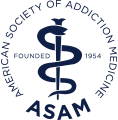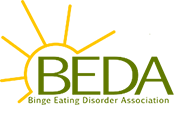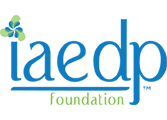Carolina House provides leading self-harm treatment to ensure long-lasting recovery for a healthier and more satisfying life.
Understanding Self-Harm
Learn about self-harm treatment
When an individual feels compelled to pinch, cut, burn, or tear his or her own skin, pull out hair, hit himself or herself, and/or prevent wounds from healing, he or she is engaging in self-harm. Also sometimes referred to as self-injury or self-mutilation, self-harm may also be characterized by hitting oneself with an object, purposefully running into hard surfaces, breaking one’s own bones, or knowingly consuming toxic substances. This type of behavior is often a result of stress or severe emotional pain. By harming oneself, an individual may experience temporary relief, and may feel that he or she has taken a modicum of control over his or her life. However, these positive emotions are often followed by feelings of shame and guilt.
Continued self-harm can bring on a number of dangerous effects if the behavior is allowed to continue. Luckily, there are treatment options that can help these individuals work through their self-harming ways. Obtaining treatment such as this can improve the lives of those who have been afflicted by these conditions by providing them with the proper coping skills needed to help them defeat their dangerous behaviors.
Statistics
Self-harm statistics
Research has suggested that roughly one in seven males and one in five females participate in self-harm. The actual prevalence of the rates of self-harm are not entirely known because many people who participate in these behaviors do so in private and work hard to conceal their injuries.
Causes and Risk Factors
Causes and risk factors for self-harm
No conclusive causes for this behavior have been confirmed. However, studies suggest that a number of genetic and environmental risk factors may play into the development of self-harm, including the following:
Genetic: Self-harm can stem from symptoms linked to other mental health conditions like depression and anxiety, which are known to have genetic impacts on an individual if these disorders run throughout his or her family. Therefore, when a genetic predisposition for these disorders is present, it is more likely that someone will struggle with these symptoms than someone who does not share this same genetic background.
Environmental: Specific environmental influences can bring on emotional and/or psychological symptoms that are connected to mental illnesses. For example, extremely stressful home or work environments can cause an individual to self-harm. In addition, traumatic events can also trigger the development of this disorder, especially when an individual does not have a strong support system.
Risk Factors:
- Lack of sufficient support system
- Having unstable emotions / mood
- Confusion pertaining to one’s sexuality
- Experiencing the unexpected death of a friend or loved one
- Exposure to trauma / experiencing trauma
- Having inept coping skills
- Preexisting mental illness
- Poor impulse control
- Family history of mental illness
Signs and Symptoms
Signs and symptoms of self-harm
Self-harm does not often occur around others. This form of unhealthy coping is often conducted behind the scenes and away from friends, family members, or loved ones so that the afflicted individual does not receive unwanted advice or opinions about his or her behaviors. If you believe that a friend or a loved one is participating in self-harming behaviors, it is imperative to take note of the many signs and symptoms listed below:
Behavioral symptoms:
- Social withdrawal or isolation
- Wearing pants and/or long-sleeved shirts to conceal wounds
- Declined involvement in activities that were once enjoyed
- Dismissing injuries as accidents
Physical symptoms:
- Burn marks
- Patches of missing hair
- Bruising
- Cuts
- Broken bones
- Scratches or scrapes
Cognitive symptoms:
- Intrusive thoughts about wanting to self-injure
- Experiencing a sense of detachment from one’s surroundings
- Lack of impulse control
- Poor concentration
- Inability to focus attention
Psychosocial symptoms:
- Loneliness
- Pervasive feelings of hopelessness, helplessness, and/or worthlessness
- Defeatist attitude
- Increased feelings of anxiety when one is not able to self-harm
- Guilty feelings
Effects
Effects of self-harm
The effects of harming oneself can include short and long-term effects. From a physical standpoint, individuals can struggle with the following effects if their self-harming behaviors continue:
- Bones that do not heal properly
- Unintentional death
- Vital organ damage
- Organ failure
- Anemia
- Damage to one’s nerves
- Infection
- Hemorrhage
- Scarring or permanent damage to tissues
Other parts of an individual’s life can also be affected by self-injury. A greater risk for the following effects remains if self-harm persists:
- Decline in quantity and quality of relationships with others
- Greater risk for using or abusing substances
- Social withdrawal or isolation
- Increased conflict within interpersonal relationships
- Intrusive thoughts about self-harm
- Overwhelming compulsions to injure oneself
Co-Occurring Disorders
Self-harm and co-occurring disorders
Self-harm is often symptomatic of another mental health condition that is occurring. Below are some of the many mental health disorders that can produce self-harm behaviors as symptoms:
- Borderline personality disorder
- Substance use disorders
- Obsessive-compulsive disorder (OCD)
- Posttraumatic stress disorder (PTSD)
- Generalized anxiety disorder
- Panic disorder
- Depressive disorders
- Bipolar disorder











